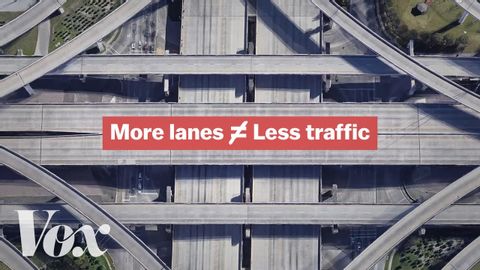高速道路がいかに交通を悪くするか (How highways make traffic worse)
林宜悉 が 2021 年 02 月 12 日 に投稿  この条件に一致する単語はありません
この条件に一致する単語はありませんUS /ˌɪndəˈvɪdʒuəl/
・
UK /ˌɪndɪˈvɪdʒuəl/
- n. (c.)個人;個々の項目;個体;個人競技
- adj.個人用の;個人の;個々の;独特の
US /ˈɪnˌstɪŋkt/
・
UK /'ɪnstɪŋkt/
- n. (c./u.)条件;期間;学期;用語;関係;項;妊娠期間;任期
- v.t.称する
US /ɪmˈpruv/
・
UK /ɪm'pru:v/
エネルギーを使用
すべての単語を解除
発音・解説・フィルター機能を解除
